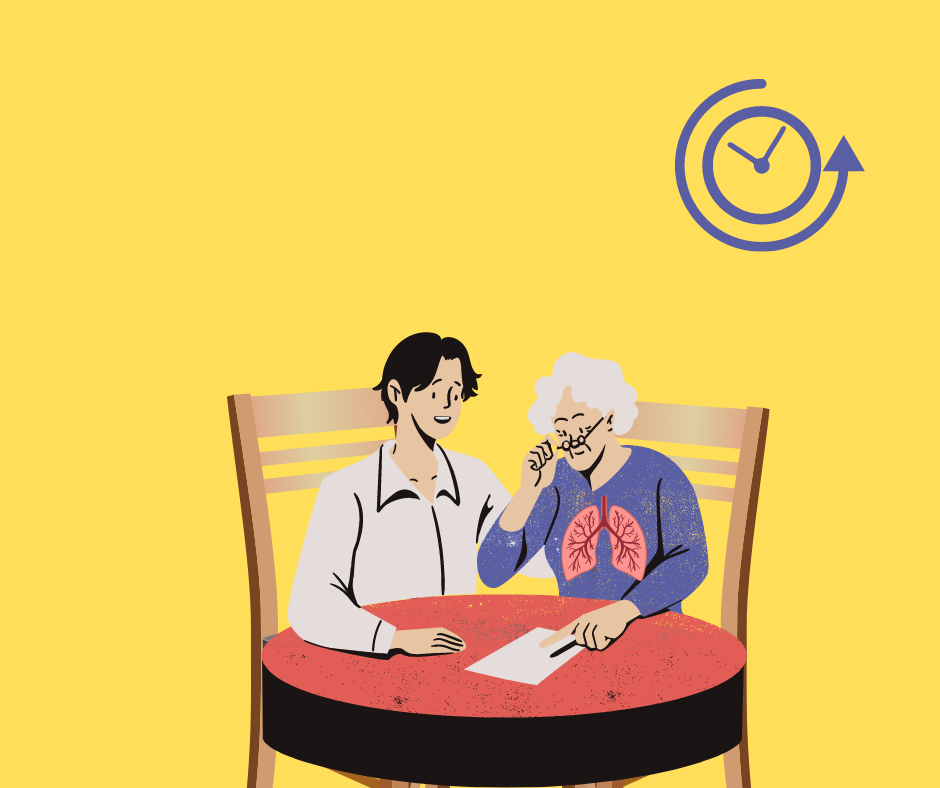What are the types of COPD?
Introduction
One of the top questions online when searching about COPD is “Are COPD and emphysema the same”. While emphysema is a type of COPD it is not the other way around. Such as how Alzheimer’s is a type of dementia. While COPD is a medical term that covers a variety of conditions we are going to break down and cover the three most common types emphysema, chronic bronchitis, and asthma.
Emphysema
Emphysema is a COPD condition that develops over and involves the gradual damage of lung tissue. Specifically, Emphysema relates to the “destruction of the alveoli” which are the air sacs in your lungs (ALA, 2023). This condition is often called the most preventable respiratory disease because of its link to smoking. This includes tobacco smoke and marijuana smoke, along with continued secondhand exposure. While some air pollutants (continued occupational exposure to fumes or dust) and other respiratory infections can lead to emphysema its number one cause remains to be smoking. Since this is a gradual disease it can take years to develop symptoms, the degree of onset also varies depending on the level of smoking. Early signs are shortness of breath, coughing with mucus, wheezing, and tightness of the chest. There are several tests that are needed to diagnose if a COPD condition is emphysema specifically. These include “x-rays, pulse oximetry, spirometry and other pulmonary function tests, arterial blood gas tests and electrocardiograms (ECG)” (ALA, 2023). Emphysema can also lead to the development of other conditions. These induce collapsed lungs (pneumothorax), heart problems, and the development of large hotels in the lungs called bullae. Sadly emphysema, like other COPD conditions, cannot be cured but treatments are available to alleviate symptoms. Such as medications, therapies, and surgeries.
Chronic Bronchitis
Chronic bronchitis is “long-term inflammation of the bronchi” which are the breathing tubes in your lungs and airways (JHM, 2019). This inflammation causes more mucus to be produced in your airways which leads to a wet cough. Again the primary cause of Chronic Bronchitis is smoking since it is not caused by a virus or bacteria, unlike acute bronchitis which can be. In order for the bronchitis to be moved from acute to chronic the individual must have a cough and excess mucus (expectoration) production for most days of at least 3 months a year for 2 years or more in a row. Also, other conditions can cause similar symptoms so those often have to be ruled out before diagnosis. Common tests for Chronic Bronchitis outside of symptoms include Spirometry which is a test that “uses a spirometer device to see how well your lungs are working” (JHM 2019). This may be a recurring test after diagnosis to see how well treatment is working or if the lung disease is progressing. The other common type of test is the peak flow monitor which is a test that “measures the fastest speed you can blow air out of your lungs” (JHM, 2019). The faster you blow the clearer your airways while the slower you blow the more inflamed they may be. Treatment of chronic bronchitis is similar to other conditions under the COPD umbrella but with an added focus on reducing mucus build-up and inflammation.
Asthma
Asthma is a condition in which “your airways narrow and swell and may produce extra mucus” (Mayo Clinic, 2022). Asthma can vary from person to person in strength and symptoms therefore some individuals may go all their life rarely affected by the symptoms while others may have frequent attacks and difficulty breathing. The most common asthma signs are shortness of breath, chest tightness, wheezing when exhaling, coughing or wheezing attaches that are worsened by a respiratory virus. There are also specific types of asthma that flair up in certain conditions such as exercise-induced asthma, occupational asthma, and allergy-induced asthma. You should see a doctor if your signs and symptoms worsen such as when signs and symptoms of asthma become more frequent and intense, you experience increasing difficulty breathing and need to use a quick-relief inhaler more often. Importantly if you experience rapid worsening of shortness of breath or wheezing, no improvement even after using a quick-relief inhaler, or shortness of breath when you’re doing minimal physical activity it may be a sign of an asthma emergency.
Conclusion
In summary, COPD covers a variety of conditions that all have to do with your breathing and lungs. The most common types are emphysema, chronic bronchitis, and asthma. Emphysema is the destruction of the alveoli caused by smoking. Chronic bronchitis is the inflammation of the bronchiole tubes which often is characterized by excessive mucus build up and asthma is the narrowing and swelling of airways. Though none of these conditions have a cure, they can all be managed via a variety of treatments some of which we covered here.
Hopefully, we have now thoroughly informed you about COPD. Below is a copy of our most recent guide on COPD which includes:
- The information above (in a convenient document)
- Additional Resources (Community Resources, Helpful Blogs, etc)
- And an extra section on what to do when COPD worsens (Not available elsewhere)
Sources:
Association, A. L. (n.d.). Emphysema. American Lung Association. https://www.lung.org/lung-health-diseases/lung-disease-lookup/emphysema#:~:text=Emphysema%20is%20one%20of%20the,alveoli%20(tiny%20air%20sacs).
Chronic bronchitis. JHM. (2019, November 19). https://www.hopkinsmedicine.org/health/conditions-and-diseases/chronic-bronchitis#:~:text=Chronic%20bronchitis%20is%20often%20part,may%20also%20play%20a%20role.
Mayo Foundation for Medical Education and Research. (2022, March 5). Asthma. Mayo Clinic. https://www.mayoclinic.org/diseases-conditions/asthma/symptoms-causes/syc-20369653

Matthew Laming
Client Relations
Graduate of Northwood University

